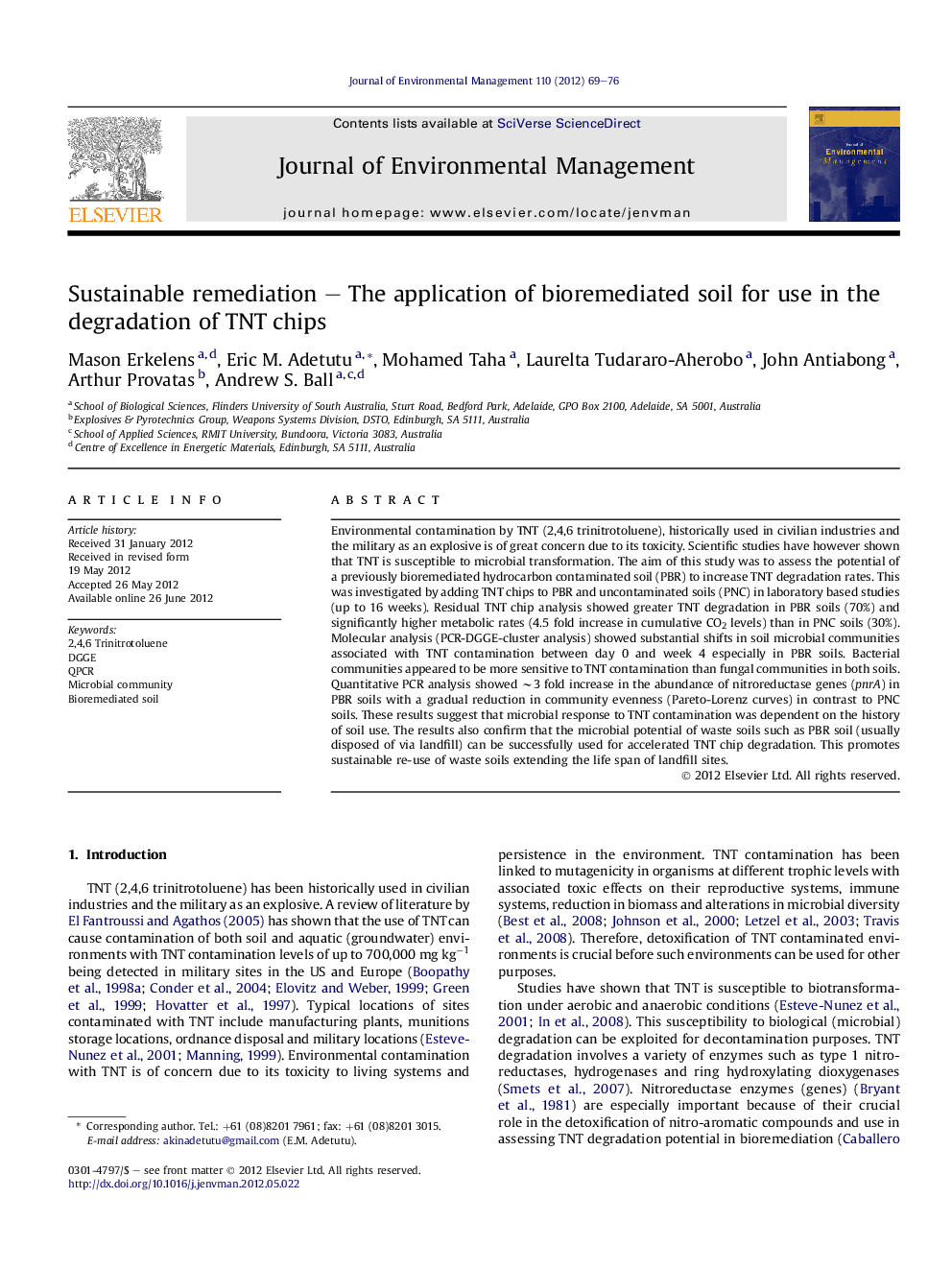| Article ID | Journal | Published Year | Pages | File Type |
|---|---|---|---|---|
| 1056507 | Journal of Environmental Management | 2012 | 8 Pages |
Environmental contamination by TNT (2,4,6 trinitrotoluene), historically used in civilian industries and the military as an explosive is of great concern due to its toxicity. Scientific studies have however shown that TNT is susceptible to microbial transformation. The aim of this study was to assess the potential of a previously bioremediated hydrocarbon contaminated soil (PBR) to increase TNT degradation rates. This was investigated by adding TNT chips to PBR and uncontaminated soils (PNC) in laboratory based studies (up to 16 weeks). Residual TNT chip analysis showed greater TNT degradation in PBR soils (70%) and significantly higher metabolic rates (4.5 fold increase in cumulative CO2 levels) than in PNC soils (30%). Molecular analysis (PCR-DGGE-cluster analysis) showed substantial shifts in soil microbial communities associated with TNT contamination between day 0 and week 4 especially in PBR soils. Bacterial communities appeared to be more sensitive to TNT contamination than fungal communities in both soils. Quantitative PCR analysis showed ∼3 fold increase in the abundance of nitroreductase genes (pnrA) in PBR soils with a gradual reduction in community evenness (Pareto-Lorenz curves) in contrast to PNC soils. These results suggest that microbial response to TNT contamination was dependent on the history of soil use. The results also confirm that the microbial potential of waste soils such as PBR soil (usually disposed of via landfill) can be successfully used for accelerated TNT chip degradation. This promotes sustainable re-use of waste soils extending the life span of landfill sites.
► The rate of TNT degradation was assessed in clean and treated waste soils. ► We observed shifts in soil microbial communities due to TNT introduction. ► We detected greater metabolism and copies of TNT degrading genes in waste soils. ► Higher TNT degradation rates were also observed in waste soils than in clean soils. ► Waste soils can be re-used for treating TNT leading to sustainable bioremediation.
